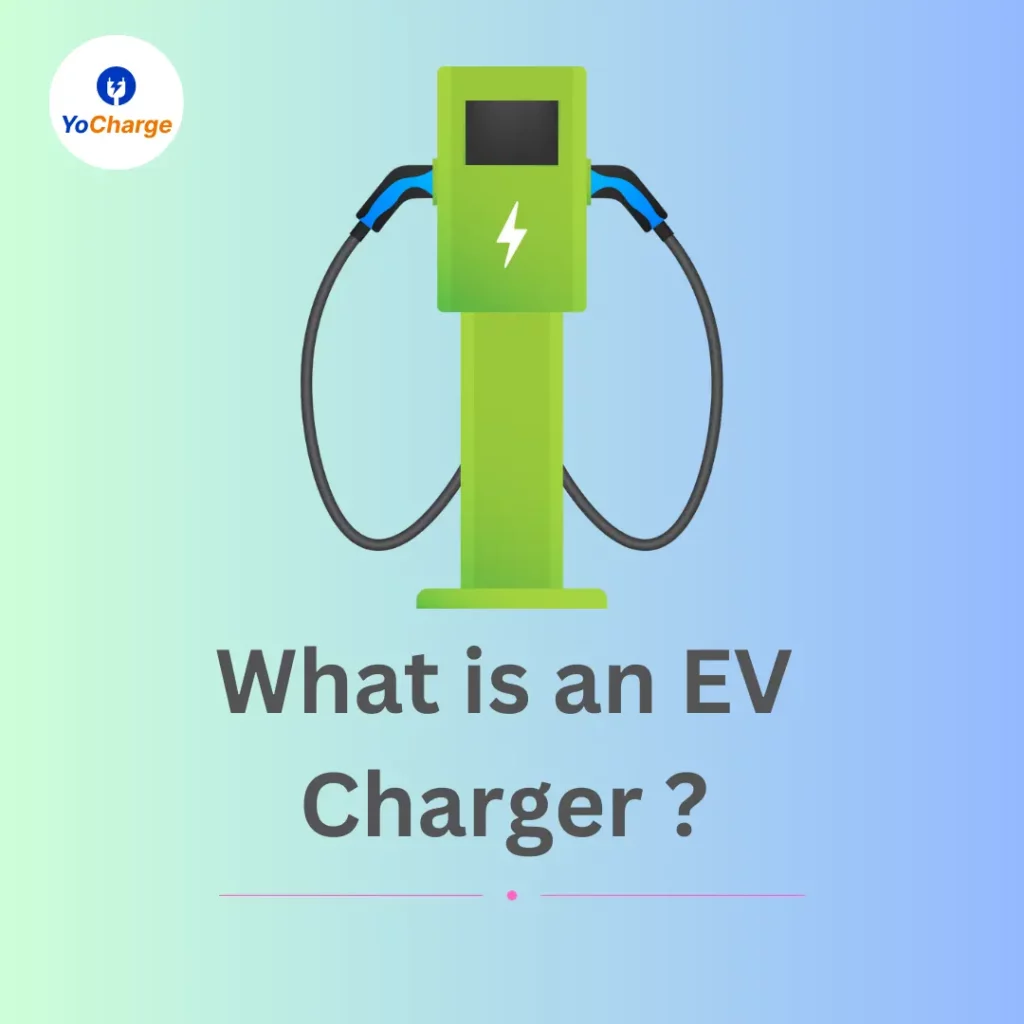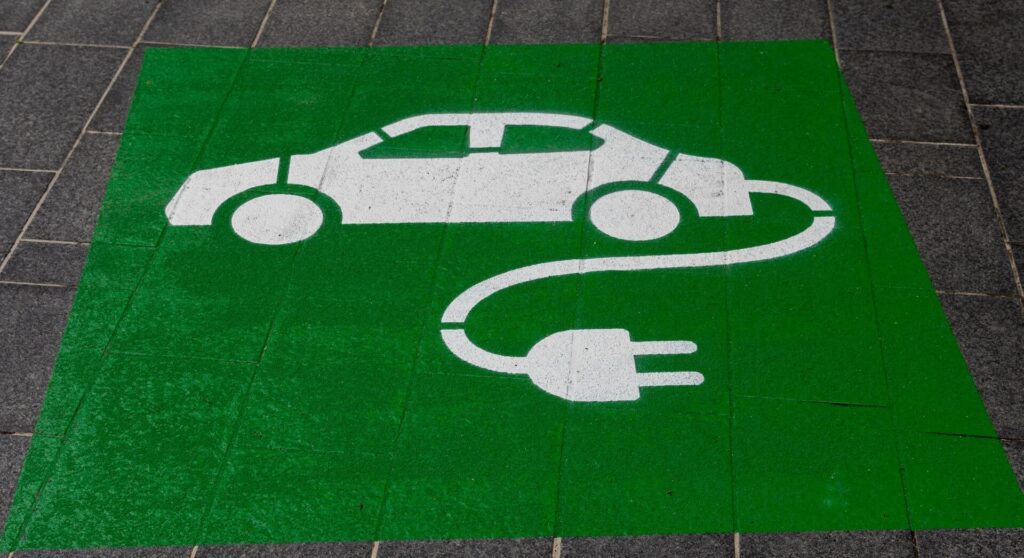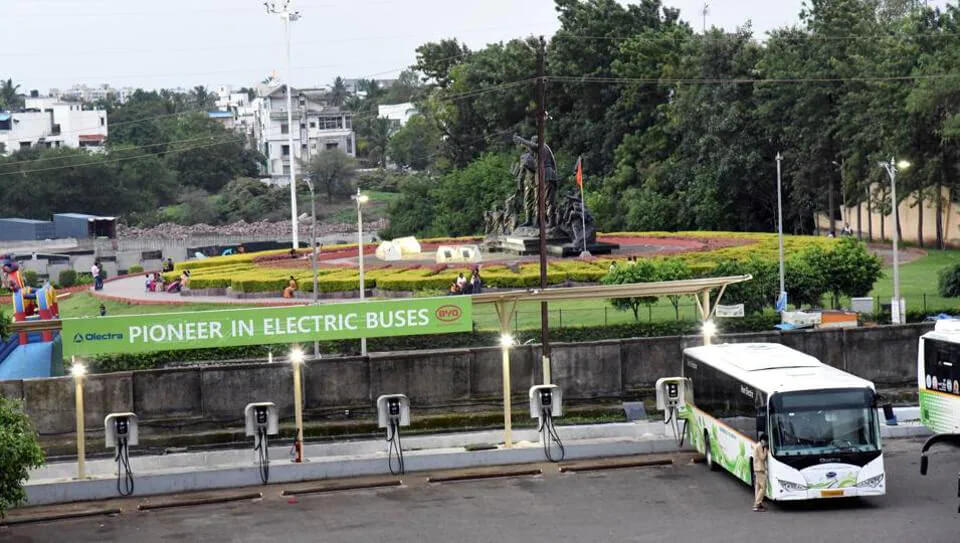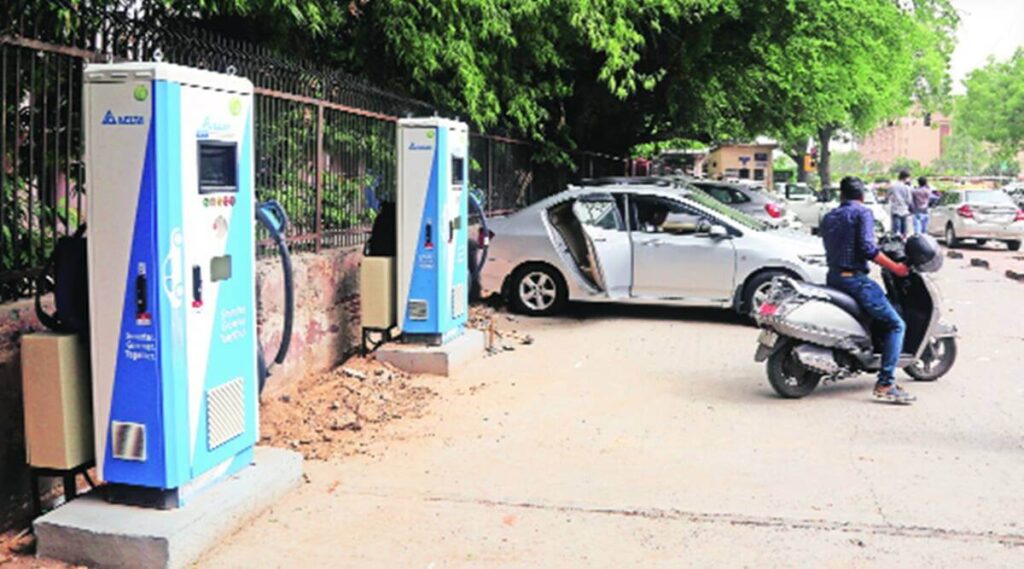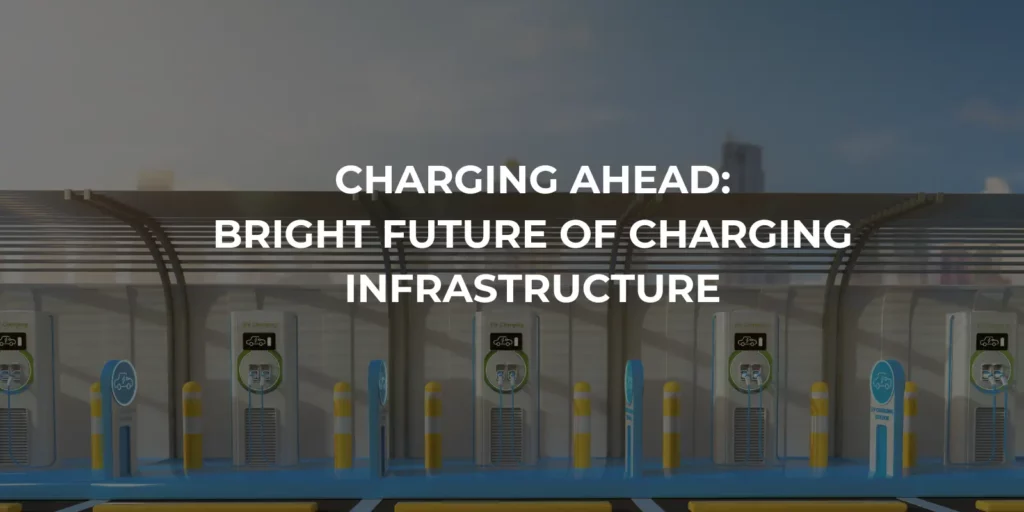
Electric vehicles (EVs) are rapidly changing the landscape of transportation and creating a need of a strong EV charging infrastructure. In the past decade, we have witnessed a surge in EV popularity, driven by factors like increasing environmental awareness, technological advancements, and growing consumer interest.
According to data, global electric car sales reached a record high in 2022, exceeding 10 million units – a 55% increase compared to 2021. This trend is expected to continue, with EVs projected to become a dominant force in the automotive industry.
The widespread adoption of electric vehicles (EVs) largely depends on the development of a strong charging infrastructure. Similar to how gas stations facilitated the growth of conventional vehicles, a network of well-situated and efficient charging stations is vital for EVs to become a genuinely feasible and attractive option for a broader range of consumers.
In the absence of a robust charging infrastructure, drivers face limitations in travel range and experience “range anxiety” – the fear of running out of power before getting to a charging point.
Therefore, the future of electric vehicles is intrinsically linked to the growth of EV infrastructure. In the coming years, we can expect significant investments and advancements in charging technology, paving the way for a cleaner and more sustainable transportation ecosystem.
The Current State Of EV Charging Infrastructure
Fueling an EV is different from filling up a gas tank. EV charging stations come in various types, each offering distinct charging speeds and capabilities.
- Level 1 Charging: The slowest option, often referred to as “trickle charging,” typically uses a standard household outlet (120 volts). While convenient for overnight charging at home, Level 1 charging adds a limited range per hour.
- Level 2 Charging: This is the most common type of public charging station, utilizing 240 volts and delivering significantly faster charging speeds compared to Level 1. A Level 2 charge can typically replenish a battery in several hours, making it suitable for workplace or destination charges.
- DC Fast Charging: These stations, also known as DC Fast Chargers or Level 3 chargers, offer the quickest charging option using direct current (DC) electricity. They can provide a substantial range boost in under an hour, ideal for long-distance travel. However, DC Fast Chargers are currently less widespread than Level 2 stations.
Looking at the global landscape, the number of EV charging stations is steadily increasing. According to the International Energy Agency (IEA), there were 2.7 million public charging points worldwide, with more than 900,000 installed in 2022 representing a significant growth concentrated in China, Europe, and North America.
Despite this progress, regional variations exist. Developed nations generally boast a denser network of EV charging stations compared to developing countries. Additionally, within regions, urban areas tend to have better infrastructure compared to rural areas.
While the growth of EV infrastructure is promising, challenges remain. Accessibility – particularly in remote locations – and charging speeds can still be limitations for some drivers.
The Future of Charging Infrastructure Growth
The future of charging infrastructure is poised for significant growth, driven by a confluence of factors. Analysts predict a dramatic expansion in the number of EV charging stations globally. According to a 2023 analysis by faistgroup, 3.4 million charging stations will be needed by 2030 to meet drivers’ demand. This is in addition to an average of 1,600 new installations per week in 2021, and 6,000 per week by 2030.
There are several key drivers propelling this growth are the following:
- Government Initiatives: Many governments are actively promoting EV adoption through financial incentives, tax breaks, and investments in charging infrastructure. For instance, the US government recently allocated billions of dollars towards building a national network of EV chargers along major highways.
- Private Investments: Recognizing the potential of the EV market, private companies such as Ather Energy are investing heavily in charging infrastructure development. Energy companies, utilities, and car manufacturers are all vying for a stake in this growing sector.
- Technological Advancements: Battery technology is constantly evolving, leading to longer EV ranges and faster charging times. Additionally, advancements in areas like smart charging and wireless charging are poised to further enhance the user experience.
Smart charging utilizes software to optimize charging schedules and minimize strain on the electricity grid. This technology can help integrate EVs more seamlessly into existing power systems.
Wireless charging eliminates the need for cables. Imagine parking your car on a special pad and it automatically starts charging! While still in its early stages, wireless charging holds immense promise for the future.
Battery swapping stations offer a unique solution, particularly for long-distance travel. Instead of waiting for a full charge, drivers can simply swap their depleted battery for a pre-charged one, significantly reducing charging time.
These innovative EV solutions are combined with ongoing investment from both the government and private sector. It will help create a more robust and user-friendly EV charging infrastructure, ultimately driving wider EV adoption and a cleaner transportation future.
The Benefits Of A Robust EV Charging Infrastructure
A well-developed network of EV charging stations offers a multitude of benefits for both drivers and the environment.
For EV drivers, a robust charging infrastructure translates to:
- Reduced Range Anxiety: One of the biggest concerns for potential EV owners is “range anxiety” – the fear of running out of power before reaching a charging station. A dense network of conveniently located chargers alleviates this worry, allowing drivers to confidently plan longer trips and enjoy greater peace of mind.
- Enhanced Convenience: A wider availability of charging options makes owning an EV more practical. Drivers can easily top up their batteries at home, at work, while shopping, or even on road trips. This convenience encourages people to switch to EVs and reap the benefits of electric transportation.
Beyond individual advantages, widespread EV adoption contributes significantly to environmental well-being:
- Reduced Emissions: Electric vehicles produce zero tailpipe emissions, unlike gasoline-powered cars. As more EVs hit the road, overall air pollution levels are expected to decline dramatically. Reaching 50% of EV sales by 2030 could result in a 24% decrease in emissions compared to 2005 levels.
- Cleaner Air: Reduced emissions from EVs directly translate to cleaner air, especially in urban areas where traffic congestion is a major contributor to air pollution. This improvement in air quality has a positive impact on public health, reducing respiratory illnesses and improving quality of life.
The economic benefits of a robust EV infrastructure are also noteworthy:
- Job Creation: The transition to EVs necessitates the development and maintenance of charging infrastructure, creating new job opportunities in areas like installation, maintenance, and grid management.
- Grid Stability: Smart charging technologies can help integrate EVs into the existing power grid more efficiently. By optimizing charging times and leveraging renewable energy sources, EVs can even contribute to grid stability in the long run.
A robust EV infrastructure offers a win-win scenario for drivers, the environment, and the economy. By fostering convenience, reducing emissions, and creating new opportunities, a strong network of charging stations paves the way for a more sustainable and prosperous future.
Investment Opportunities In EV Charging Infrastructure
Investing in EV charging stations presents a lucrative business opportunity due to the global surge in electric vehicles (EVs) and the increasing demand for charging infrastructure. The rise of EVs, driven by factors like declining battery costs, government incentives, and environmental consciousness among consumers, is propelling the need for robust charging networks.
Countries like the USA, Europe, and the Middle East are aggressively expanding their EV infrastructure to meet this demand. The global electric vehicle market is projected to grow significantly by 2030, with EVs expected to constitute 60% of all vehicle sales globally.
Key Points For Investors
- Attractive Opportunities: The market for electric vehicle charging offers diverse opportunities for private investors, including individuals looking for eco-friendly investments and businesses aiming to enhance customer experiences.
- Lucrative Return On Investment: With the increasing adoption of EVs, there will be a growing demand for charging services, translating into profitable investment opportunities.
- Diverse Ownership Options: From owning charging stations to workplace setups, there are various investment avenues catering to different user needs, allowing investors to tailor their strategies accordingly.
- Investing In Sustainability: Investing in EV charging stations not only offers financial potential but also demonstrates a commitment to sustainable energy solutions and environmental responsibility.
Future Outlook Of EV Charging Infrastructure
The future of charging infrastructure looks promising as governments worldwide set ambitious emissions reduction targets and prioritize clean energy solutions. Investments in EV infrastructure are predicted to exceed $57 billion by 2028, indicating significant growth opportunities for investors. The development of sufficient and reliable EV chargers and infrastructure is crucial for accelerating the transition to electric vehicles globally.
The Final Words
The transportation landscape is rapidly changing with the increasing popularity of electric vehicles (EVs) driven by environmental awareness and technological advancements. Global electric car sales exceeded 10 million units in 2022, with continued growth projected. However, widespread EV adoption depends on developing a robust charging infrastructure comparable to gas stations.
The current EV charging infrastructure offers various charging options, however there are regional differences in the number of public charging points. Looking ahead, estimates suggest a significant increase in charging stations globally by 2030, driven by government initiatives, private investments, and technological advances. A well-developed EV charging infrastructure offers benefits such as reduced emissions, cleaner air, convenience for drivers, job creation, and grid stability.
Investing in EV charging infrastructure presents lucrative opportunities, and with governments prioritizing clean energy solutions and significant investments projected in EV infrastructure, the future outlook for EV charging stations is promising for accelerating the global transition to electric vehicles.

Introducing YoCharge
This is a perfect opportunity if you want to invest in EV Charging Infrastructure. To make a wise investment, partner with YoCharge and boost your EV Charging Business with our White Label EV Charging Software.
FAQs (Frequently Asked Questions)
Why is EV charging infrastructure important for EVs?
EV Charging Infrastructure is important because a strong network of charging stations reduces driver anxiety about running out of power and makes owning an EV more convenient.
What are the different types of EV charging stations?
There are three main types: Level 1 (slow, for home use), Level 2 (faster, common at public stations), and DC Fast Chargers (fastest, ideal for long trips).
What are the benefits of widespread EV adoption?
The benefits of widespread EV adoption are zero tailpipe emissions, leading to cleaner air, and a reduction in greenhouse gases.
What are some challenges to building more EV charging stations?
Upgrading the electricity grid, navigating permitting processes, and the upfront cost of stations are some challenges to building more EV charging stations.
How can we address these challenges?
Collaboration between governments, utilities, and businesses, along with innovation in areas like smart charging, can help overcome these challenges.
